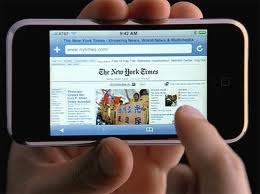India is expected to have close to 165 million mobile Internet users by March 2015, up from 87.1 million in December 2012 as more people are accessing the web through mobile devices and dongles, a report by Internet and Mobile Association of India (IAMAI) and IMRB said on Wednesday.
According to the report, the number of mobile Internet users increased to 87.1 million by December 2012 from 78.7 million users in October 2012, who accessed Internet through dongles and tablet PCs.
This is expected to grow further to 92.9 million (by March 2013), 130.6 million (by March 2014) and 164.8 million by March 2015.
The number of mobile Internet users in the country stood at 4.1 million in March 2009, the study said.
Of the 78.7 million users in October 2012, 61 million Off-Deck users (accessing sites other than sites of the operator), 15 million On-Deck users (accessing only sites specified by the operator), the report said.
“The remaining 2.7 million users accessed the internet using dongles (i.e. connected to Internet using 2G, 3G or high-speed data cards),” it added.
The report said an average monthly bill of a user who access Internet on mobile devices is Rs 460. Of this, about Rs 198 is spent towards Internet expenses.
“This is a very healthy trend as it shows willingness of the users to spend nearly 40 per cent of the bill towards Internet access. The rest is spent on voice services,” the report said.
Email, social networking services (SNS) and messengers have high usage among mobile Internet users. The report found that accessing online videos, games or reading online news is done about 2-6 times a week.
While online games are accessed by nearly 50 per cent of the mobile Internet users, less than 30 per cent of users read online news and watch online videos, it added.





Comments
Add new comment